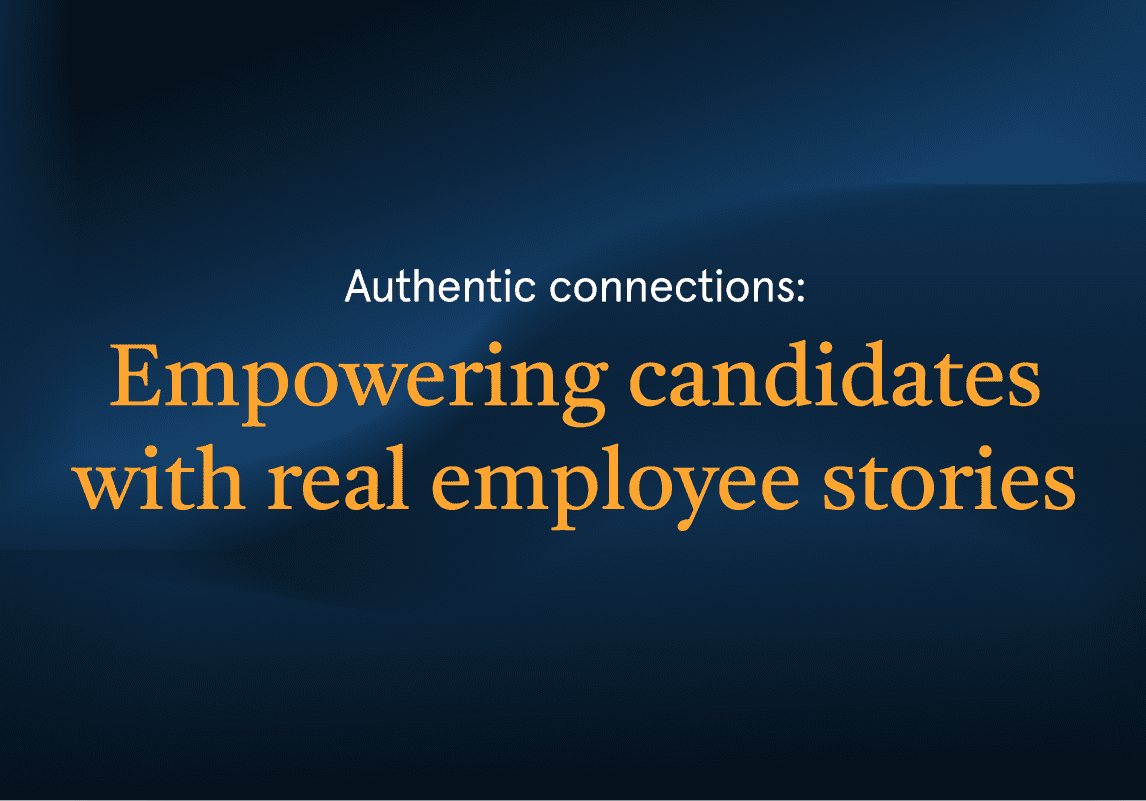How did you find your way into TA, what’s your story?
I took a job at Enterprise Rent-a-Car and I found out that I was actually quite good at sales. I enjoyed it, but I didn’t feel great about the product I was selling. After talking to some friends, they thought I should look into either pharma or recruiting. Both have a little bit of that feel-good feeling instead of just selling damage waiver insurance! So, long story short, I took a job at a temp agency making $10 an hour, playing “search-a-word” on resumes helping the recruiters.
A few months later, they asked me if I wanted to try recruiting, and within two hours of doing it on my first day, I was hooked. I won’t get into all the gory details, but I was number one out of 25 recruiters that first year. I absolutely fell in love with it and haven’t looked back.
Tell me more about that, your early years.
I was that kid in high school who had three jobs at the same time, as well as cheerleading and band. I was always kind of over-committed. I worked in a lot of customer service roles — waiting tables and retail. I learned that the more efficient you are, especially waiting tables, the more you can service everyone and still provide a good customer experience. That’s when your tips would get really high. I think in a lot of ways, waiting tables and being in the weeds with six tables that get sat all at once, was what probably prepped me for recruiting more than anything else in my past, which is kinda crazy to think about. I always loved work, so I always found myself kind of gravitating to it, and that just never changed.
What works best to engage and nurture candidates?
For years, every single time I would “touch” a candidate —leave a message, have a brief conversation, meet at an event— even if they weren’t interested and we never actually interviewed, I would document it religiously. I believe that if you can be organized and know how, when, and what you talked about in the past, you can follow up and nurture with targeted information that is relevant. You can reference something from your previous conversation and know what they’re looking for in their next role. The better our future communications with them will be, the more likely we will be able to convert them down the road.
How about passive prospects?
I think that if you’re able to deliver content that’s relevant, targeted, and speaks to their wants and their wishes, then absolutely it can be effective in attracting passive people. It really depends on getting in front of folks and that’s a little bit of a challenge these days. One of the things that we’ve done in some of my past clients is we leverage the current employees and really activate them and kind of do “backdoor branding” if you will. When they share content on their social channels, their friends, their former co-workers and their friends from school are able to see it. We’re driving awareness that way.
What’s one of your most favorite campaigns?
One of my favorite campaigns was for a little startup catering to wedding photographers, event planners, sort of solo-preneurs. Photographers were a big part of their audience, so we launched a campaign called “picture yourself at Honeybook.” We took pictures of employees at work with somebody holding a mock-up of a large Polaroid frame. You could see the person through the hole in the Polaroid picture. It was fun, had a visual component and was a way to spotlight employees. A different person was spotlighted each week, we put it on our blog, then they would share it out on LinkedIn, Facebook, or Twitter, and all their friends would comment, and they’d start following us. These “employee takeover,” campaigns are really effective.
How do you get your company to stand out?
Definitely keeping it real is important. I have a client that is fast paced, a place for over-achievers to over achieve and if new hires are not A+ players, they let them go quickly. Their Glassdoor reviews were not great such as, “wow, if you’re not A+ all the time, you’re not going to make it here.” This feedback wasn’t very positive, but it clearly represented the culture. Instead of trying to hide it, the TA team push every single prospect to Glassdoor. The thinking goes, if they’re only looking for people that are on their A-game, and it’s not you, why waste everybody’s time. That is a way of embracing your employer brand imperfections. It’s not perfect by everyone’s standards, but for some people, it’s their dream job. I love this story. We need to do a better job of educating our audience, not just selling and marketing to them all the time.
What’s the secret to converting great prospects into candidates?
Finding the right people, for the right job, at the right company. At the end of the day, if you match the right person to the right role in the right culture at the right company, you are, ultimately, going to have a great candidate. Really to attract and convert, it’s about getting the right content in front of the right people on the right channels where they hang out, and that‘s really the magic formula. We can absolutely attract and convert people as long as we’re speaking their language and we’re answering the “why should I?” and “is this the right place for me?” kind of questions.


